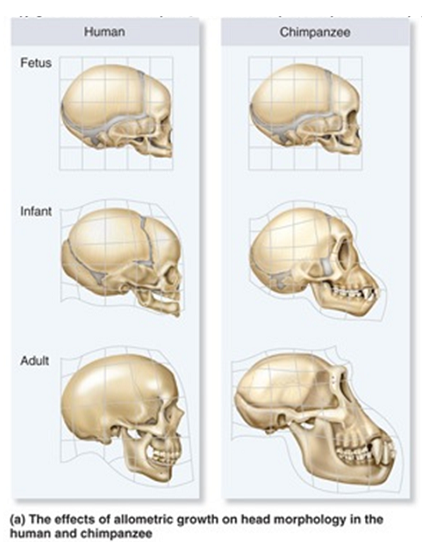Imagine that, similar to events that occurred 65 million years ago, a huge meteorite were to hit Earth tomorrow, spewing cloudy debris into the atmosphere and blocking a large proportion of sunlight
Because plants rely on sunlight, global rates of photosynthesis would be greatly reduced, and many of the animals that depend on photosynthetic plants (such as herbivores and the predators that feed on those herbivores) would starve or go extinct.
In this scenario, why can't the plants continue to produce sugars and survive if the sugar-producing reactions in photosynthesis are considered 'light independent"?
The Calvin cycle, used to drive the synthesis of glucose, requires ATP and NADPH produced during the light reactions.
You might also like to view...
Based on the figure below, what statement could you make about the development of human versus chimpanzee skulls.

A. The human and chimp skulls develop similarly until adulthood, when human jaw development slows down relative to the chimpanzee.
B. The human and chimp skulls develop similarly until the infant stage, when human jaw development slows down relative to the chimpanzee.
C. The human and chimp skulls develop similarly until the infant stage, when human cranium development slows down relative to the chimpanzee.
D. The human and chimp skulls develop similarly during the fetal stage, after which point chimpanzee cranium growth outpaces humans.
All of the following are used to construct a
theory with one exception. Select the exception.
a. repetitions of experiments. b. increased observations. c. time. d. faith. e. confirmation by many scientists
The area labeled “B” is
a. a nucleus. b. nucleoplasm. c. endoplasmic reticulum. d. a vacuole. e. a nucleoid.
The ________ are the tubular structures that occur between the ovaries and the uterus
Fill in the blank(s) with correct word